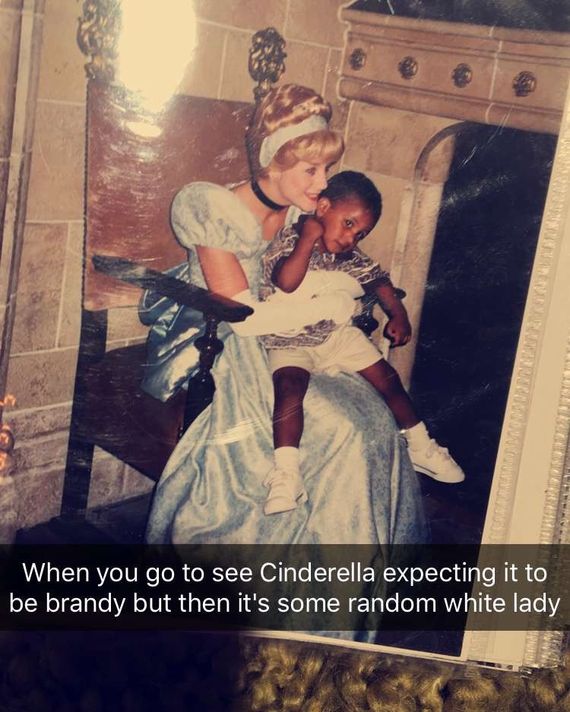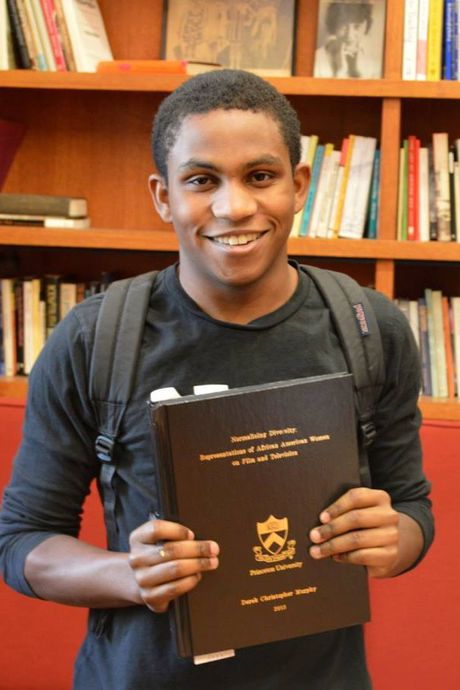
Every week for the foreseeable future, Vulture will be selecting one film to watch as part of our Friday Night Movie Club. This week’s selection comes from Vulture writer Chris Murphy, who will begin his screening of Cinderella on February 12 at 7 p.m. ET. Head to Vulture’s Twitter to catch his live commentary, and look ahead to next week’s movie here.
The sweetest sounds you’ll ever hear are finally making their way onto Disney+. After an inexplicable absence, Disney’s 1997 televised version of Rodgers & Hammerstein’s Cinderella starring Brandy and the late, great Whitney Houston will waltz its way onto the streaming platform on Friday, February 12. In many ways, the timing couldn’t be more perfect. What better moment to celebrate Disney’s first Black princess than Black History Month, and who could ask for a more romantic time to fall head over heels for Prince Charming than Valentine’s Day weekend? But Cinderella’s official addition to the Disney+ canon is more than just an expertly timed PR event. It opens the door for a new generation of potential film lovers and musical-theater fans to get swept up in the undeniable magic of Cinderella — the one true Disney princess who reigns over all other Disney princesses (pack it up, Elsa). On Friday, for approximately 90 unadulterated minutes, we will exit our dull and hellish reality and escape to a fantasy world where dewy-eyed dopes keep building up impossible hopes. A world where a plain yellow pumpkin can become a golden carriage. A world where no one bats an eye at a Black queen, a white king, and an Asian prince.
It would not be an overstatement to say that Brandy’s Cinderella — or as I used to affectionately call it, “Blinderella” (a.k.a. Black Cinderella) — has been the piece of culture that has most profoundly shaped my life. I vaguely remember watching it on ABC with my family the night it aired on November 2, 1997, tuning in because my mother had loved the 1965 Lesley Ann Warren–led Cinderella TV movie when she was a kid, and couldn’t believe they were making a new version with a Black princess and Whitney Houston as the Fairy Godmother. Like mother, like son, I quickly became deeply obsessed with Brandy’s Cinderella and proceeded to wear out the VHS tape (remember those) replaying it over and over again. According to family legend (and my own distant memories), I used to park myself in front of a full-length mirror, put a towel on my head in an attempt to re-create Brandy’s gorgeous braids, and sing “In My Own Little Corner” while copying Brandy’s choreography from the movie. Even though I didn’t know it at the time, I was absolutely dazzled by Rodgers and Hammerstein’s luscious, golden-age score, and the grandeur and absurdity of the Klimt-inspired costumes and set design. Sure, I also had love for Disney’s 1950 animated Cinderella, but something just clicked with Blinderella. I became deeply attached to it, so much so that I was both scared and confused when my family eventually went to Disney World, and I met Cinderella and she wasn’t Brandy.
Brandy’s Cinderella followed me throughout my life, sparking an immense and unshakable love of musical theater (a blessing and a curse, to be honest), and served as the inspiration for my college senior thesis (regrettably) titled “Normalizing Diversity: Representations of African-American Women on Film and Television,” in which I — wait for it — analyzed the history of roles available to Black women in Hollywood. While the less said about my thesis the better (good ideas, lots of typos), it did provide me with a unique opportunity to fully immerse myself in the performances from the Black actresses in Cinderella that made the movie so special to me — Brandy with her raspy tone and doe-eyed ingenuity, Whitney Houston with her wry delivery and vocal dexterity, Whoopi Goldberg and the late Natalie Desselle-Reid with their impeccable comedic timing — while my peers took on more sensible projects like “coding” or studying “the economy,” which we recently learned isn’t even real.
But it wasn’t just that Cinderella gave Black actresses a platform to shine. It was also the world in which they shone that resonated with me. I was a Black queer kid growing up in a diverse suburb, so the world on display in Disney’s 1997 Cinderella felt simultaneously like escapism and home. Is the movie’s glaring absence of any discussion of race realistic, or even realistically aspirational? Absolutely not. But the film’s use of nontraditional casting created a universe that looked like my own — quite simply, a universe where Black people and white people and Asian people just existed — more so then any of the other lily-white Cinderella stories that came before or have happened since. While the term du jour back then to describe the mechanism for compiling a diverse cast was “color-blind casting” (i.e., casting actors in parts without taking account of their race), to the Black and brown kids watching from their television screens at home, it was anything but color-blind. Blinderella was absolutely saturated with color.
The creators only partially understood the impact that this nontraditional version of Cinderella would have on us. “Looking back, it really is very poignant that it has become, I suppose, a landmark in terms of pioneering diversity on TV,” recalls Neil Meron, who executive produced the film alongside Debra Martin Chase and the late Craig Zadan. “Having the first black Cinderella … we were somewhat conscious but we didn’t think that we were creating something that would stand the test of time.” But 20-plus years later you can see Cinderella’s direct influence all over entertainment. You don’t get a Hamilton or a Bridgerton without a Brandy’s Cinderella blazing the trail. It’s the blueprint for nontraditional casting, a paragon of eccentric world-building, and one of the best examples of fairy-tale storytelling in popular culture. It makes the impossible seem possible every time you watch it.
So, on the first night of this year’s Valentine’s Day weekend, we’re absolutely not participating in any indoor dining situations. We’re finding our Prince Charming from the comfort and safety of our own homes. We’re spending time with an incredible score — which added “Falling in Love With Love” to not waste Bernadette Peters’s immense talent — the sweeping choreography of Rob Marshall, the fabulously gaudy costumes of Ellen Mirojnick, and a supporting cast that includes Jason Alexander giving Hilaria Baldwin a run for her money with his accent work. Throw on that light-blue eye shadow and a periwinkle gown, because the royals are throwing a ball and your presence has been requested. Miss Whitney “Why are you down there?” Houston will be there. Need I say more?
Cinderella is available to watch on Disney+.
Don’t have Disney+ yet? You can sign up here. (If you subscribe to a service through our links, Vulture may earn an affiliate commission.)
More From This Series
- Helen Hunt Answers Every Question We Have About Twister
- Mr. and Mrs. Smith Is a Straight Shot of Movie Star Charisma
- The Timeless Honesty of Wild Style, the First Hip-Hop Movie



